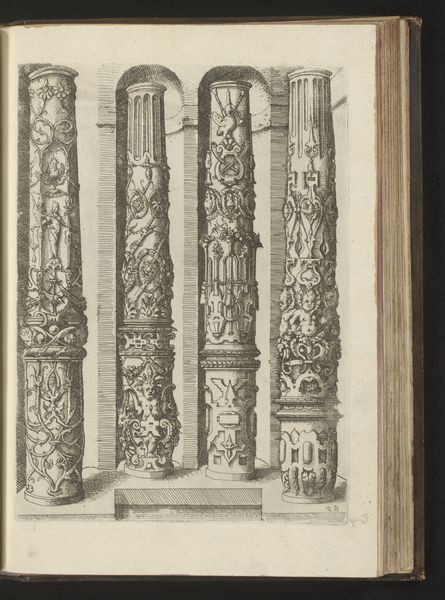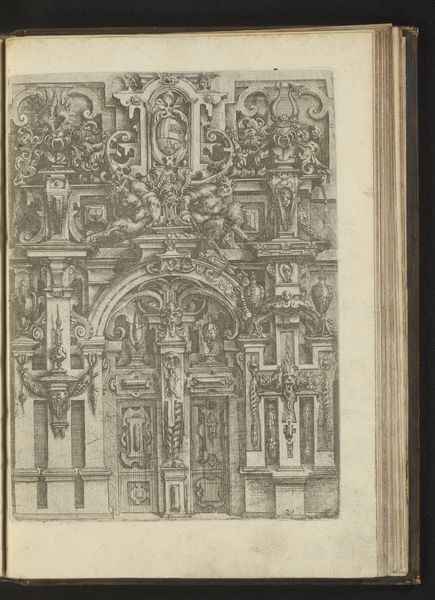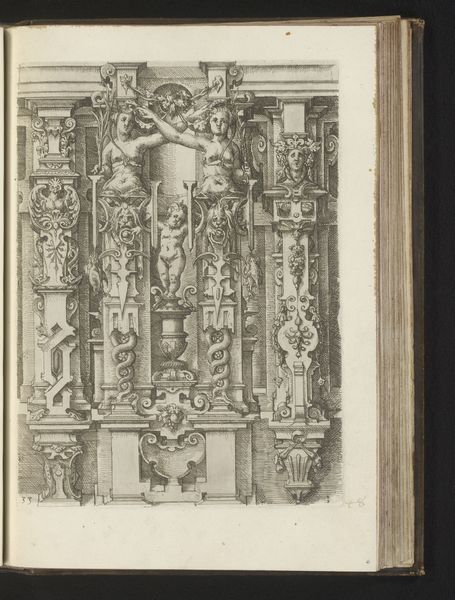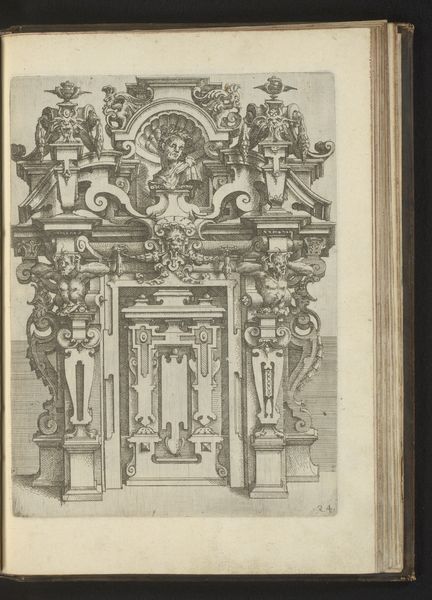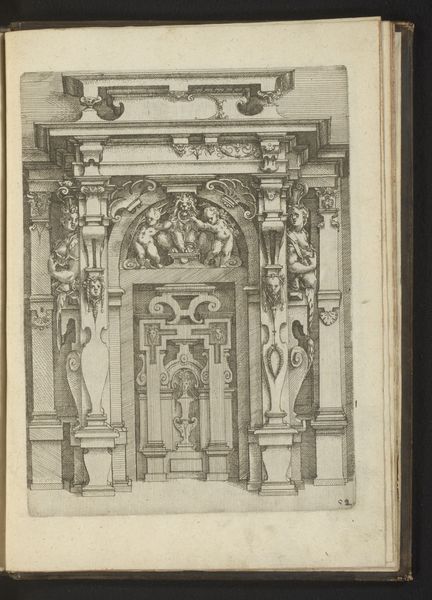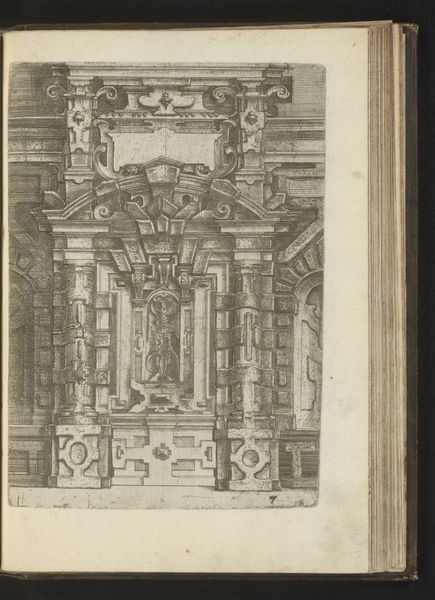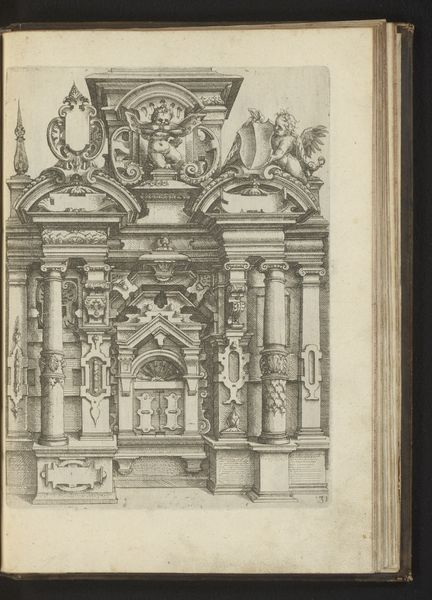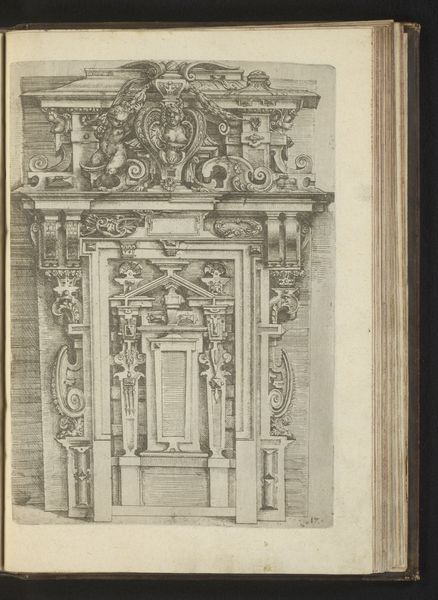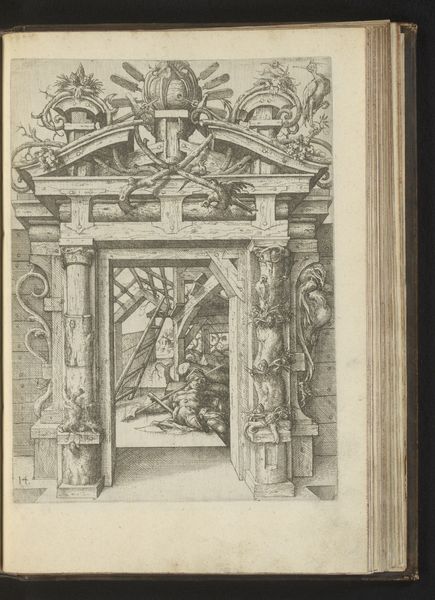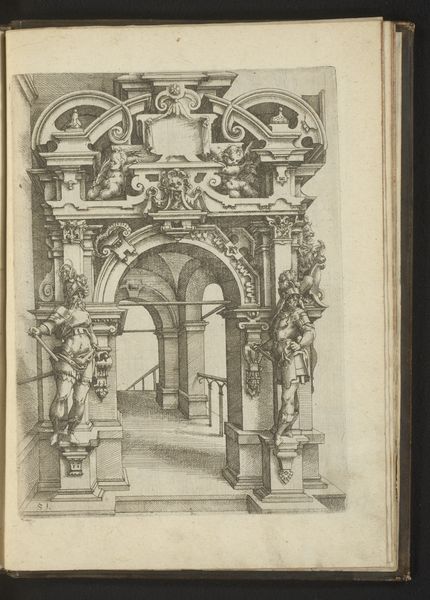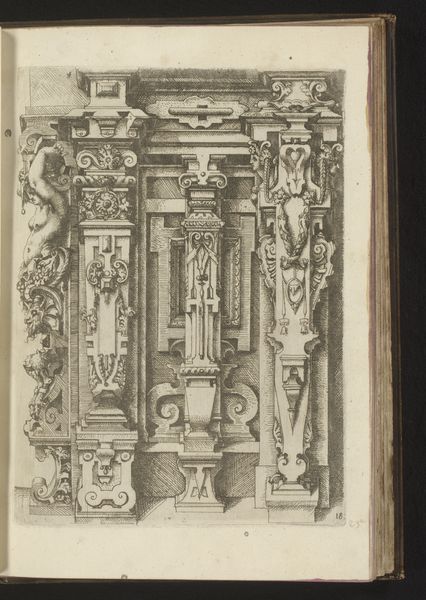
Vier Korinthische pilasters gedecoreerd met rolwerk, guirlandes en mascarons en één vrouwelijke herme van opzij gezien 1593 - 1595
0:00
0:00
drawing, paper, ink, engraving
#
drawing
#
paper
#
11_renaissance
#
ink
#
geometric
#
column
#
engraving
Dimensions: height 250 mm, width 185 mm
Copyright: Rijks Museum: Open Domain
Editor: Here we have Wendel Dietterlin’s drawing, "Four Corinthian pilasters decorated with scrollwork, garlands and mascarons and one female herm seen from the side," created between 1593 and 1595 using ink on paper. I'm struck by the level of detail, but also the seemingly bizarre combinations of decorative elements. What's your take on this, and what purpose might such a detailed drawing have served at the time? Curator: These drawings are not so much about representing existing architecture, but about visualising a potential architectural vocabulary and, indeed, influencing it. This image comes from Dietterlin’s *Architectura*, a series of fantastical architectural designs published in several editions. The images functioned almost as propaganda, shaping architectural tastes, particularly in Northern Europe, in the late 16th and early 17th centuries. Does it strike you as radical or conservative? Editor: Hmm, propaganda is an interesting way to put it! The female figure feels rooted in classical antiquity, but the overall effect feels far removed from, say, the more sober architecture of the Italian Renaissance. I suppose the sheer extravagance sets it apart. Would architects really have used this directly as a source? Curator: In many ways yes, by using it to inform the overall visual vocabulary. While perhaps not copying it verbatim, they borrowed decorative motifs, proportional relationships, and the overall sense of architectural drama. It served as a catalogue of possibilities. But there's another layer here: the social one. Who had access to these books and thus controlled the visual vocabulary of power? Editor: Ah, so access to these designs might have become a status symbol? I'd never thought of architecture this way before. Curator: Precisely. By commissioning buildings based on such designs, wealthy patrons were literally constructing their own power and prestige. Editor: So much more than just columns, then. Fascinating! Thanks for the insights.
Comments
No comments
Be the first to comment and join the conversation on the ultimate creative platform.
